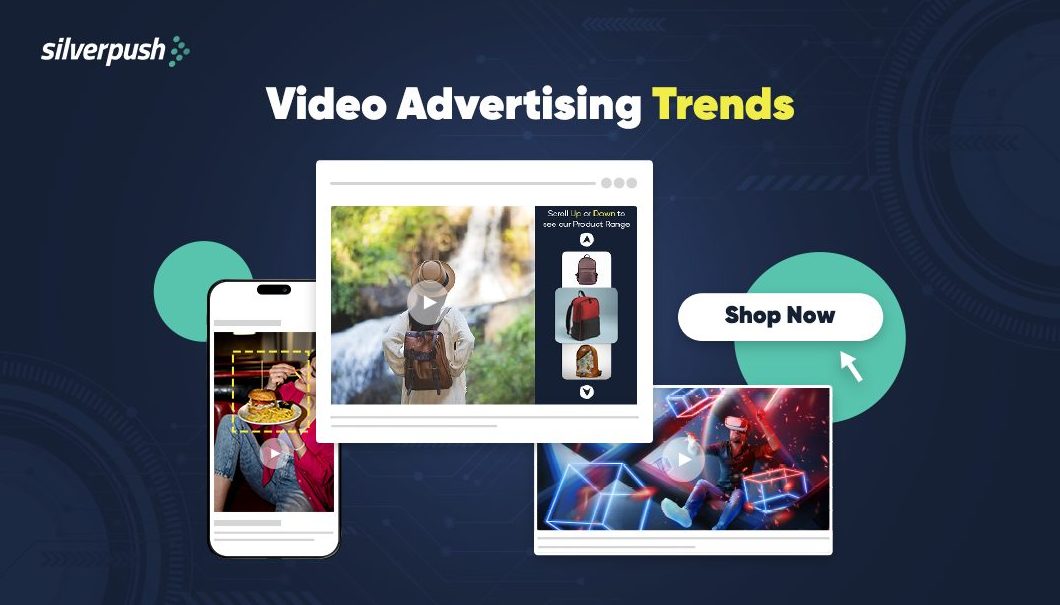Capturing Gen Z Attention: Top Trends Marketers Need to Know in 2024
PUBLISH DATE: 22 February 2024
Step aside, millennials; a fresh generation is in town – Gen Z has taken the spotlight. Born between 1997 and 2012, these digital natives are rewriting the rules of everything, from fashion to politics, and most importantly, how they consume information. For Gen Z, the search engine is now a TikTok, a YouTube tutorial, or even a casual browse through Amazon. This seismic shift in behavior presents a golden opportunity for savvy brands.
With an estimated spending power of $360 billion & an increasing influence (41 million GenZers shall be eligible to vote in 2024 US elections. Their influence extends beyond consumer choices to shaping the political landscape. As the torchbearers of the future, Gen Z demands a nuanced approach – one that not only caters to their preferences but also resonates with their aspirations and ideals.
But these digital natives tick differently. They crave authenticity, not airbrushed perfection. They value experiences that enrich their lives aligning with their beliefs, not just catchy slogans. So, how do the marketers navigate this brave new world and win their hearts in 2024?
Key trends that will define how brands can win over Gen Z in 2024
1. The Rise of the Social Search Engine
Google, move over! Gen Z turns to social media platforms like Instagram and TikTok for answers. These platforms, with their curated feeds and engaging content, are becoming new search engines. This shift opens doors for brands to be discovered organically. Think of it as a giant virtual party where you’re not just selling, but joining the conversation.
In the past year, several platforms introduced search advertising offerings, indicating an increased focus on social search that marketers are likely to prioritize in 2024.
For advertisers, it’s not about shouting your message; it’s about being present where they are, answering their questions, and sparking their curiosity in a natural, engaging way.
2. Fashion & Beauty: Get Weird, Get Wonderful
GenZ now makes up more than 40% of Pinterest’s 482 million active monthly users and is the platform’s fastest-growing demographic. Prepare to be dazzled by aquamarine makeup, chunky hoops the size of planets, and hairstyles inspired by jellyfish!
Pinterest, a Gen Z haven, predicts these Gen Z fashion trends will explode in 2024. Campaigns with themes such as “eclectic grandpa” style, a quirky blend of retro streetwear, and chic cardigans, are gaining traction. Given the platform’s impressive 80% accuracy rate in predicting past trends, marketers are encouraged to pay attention.
What drives this maximalist aesthetic? According to Pinterest, it’s all about squeezing every ounce of joy out of life and surrounding yourself with things that make you happy. For marketers, this translates to creative freedom. Embrace the bold, the weird, and the playful. Create campaigns that encourage self-expression and individuality, while experimenting with new formats like augmented reality filters or interactive quizzes that tap into GenZ’s love for games and experiences.
3. The Midas Touch with a Conscience
Gen Z has the power to make brands soar, but they’re also incredibly mindful. They care about equality, sustainability, and the impact their choices have on the world. A recent Edelman study revealed that 73% of Gen Z consumers choose brands based on their values. So, it’s not enough to simply be trendy; brands must demonstrate a genuine commitment to making the world a better place.
In the upcoming 2024 U.S. election, the influence of young people will be substantial, as millennials and Gen Z voters are projected to make up 40% of the electorate. Nevertheless, both Democrats and Republicans will face challenges in mobilizing Gen Z voters to participate in the electoral process.
Beyond the Trends: Building Lasting Connections
While these Gen Z trends offer a roadmap, the crucial takeaways are, that they’re diverse, nuanced individuals with unique interests and aspirations. The key is to move beyond the trends and focus on building genuine connections. Engage with them in authentic conversations, listen to their concerns, and create experiences that enrich their lives.
In 2024, the brands that win Gen Z’s hearts won’t be the loudest or flashiest. They’ll be the ones who understand their language, respect their values, and offer them more than just a product – they’ll offer a sense of belonging, a platform for self-expression, and a chance to make a difference. So, dive deep into the world of GenZ. Embrace the weird, the wonderful, and the socially conscious.
Beyond the Horizon: Forecasting Major Shifts in 2024’s Video Ad Landscape
PUBLISH DATE: 06 December 2023
Video advertising has emerged as a pivotal element in the domain of content marketing strategy. Whether it’s a concise 30-second ad, an interactive campaign, or captivating live footage, integrated videos within your content stand out as a highly favored and efficacious means to captivate your audience.
Remarkably, video content is the preferred choice for 80% of individuals compared to traditional written text, and an impressive 87% of businesses are already using it as a potent marketing tool.
Research underscores that a compelling 88% of consumers have been swayed by marketing videos to make purchases of products and services. The undeniable power of video highlights the significance of grasping the latest trends in video marketing to maintain a competitive edge in 2024.
This blog aims to comprehend the trends that will shape the video advertising industry in 2024 and beyond. From the ascent of AI-powered advertising to the escalating importance of personalization, these trends are bound to redefine how marketers engage with their audience and orchestrate successful video ad campaigns.

1. Growing Integration of AI in Video Advertising:
The landscape of video advertising is swiftly evolving with the increasing integration of Artificial Intelligence (AI). Anticipate a surge in businesses adopting AI to produce and disseminate video content. With AI’s remarkable capacity to analyze extensive datasets rapidly, advertisers can:
A) Enhance their understanding of the audience
B) Fine-tune ad delivery
This approach ensures that the right message reaches the appropriate audience at the optimal moment. This, in turn, facilitates the creation of more compelling and pertinent video content that resonates with the target audience.
For instance, generating videos featuring available or customized avatars, where text input is the sole requirement. This proves advantageous for cost-effective video marketing when in need of a character but faced with constraints in time or resources for large-scale video production, employing text-to-speech, or automated voices.
Additionally, AI’s role in programmatic advertising is assuming a pivotal role. Fueled by AI algorithms, automated ad purchasing and placement will restructure the industry through real-time bidding and ad optimization.This results in more efficient ad campaigns with heightened conversion rates. In 2024, Artificial Intelligence is not merely a passing trend but a transformative force poised to reshape the video advertising industry.
2. Augmented Reality & Virtual Reality:
The year 2024 will witness a paradigm shift in video ads through the integration of Augmented Reality (AR) and Virtual Reality (VR). AR advertising overlays digital elements onto the real world, creating an interactive platform for crafting captivating campaigns.
These ads enable users to seamlessly merge the virtual and physical realms, fostering deeper engagement and memorable brand interactions. Conversely, VR advertising immerses users in entirely digital environments, providing a distinctive storytelling medium suitable for product demonstrations and brand narratives.
The ability to create immersive ad experiences holds the potential to captivate audiences, setting your brand apart from competitors in a landscape where traditional advertising methods might no longer be as effective.
This innovative approach pledges to deliver campaigns that are not merely viewed but profoundly experienced by consumers. As the future of advertising veers towards interactivity, encompassing the AR and VR advertising wave signals that your business is leading the way in innovation and adopting superior business practices.
3. Contextual Advertising for Enhanced Relevance:
Contextual advertising remains a significant tool for marketers in 2024. Global spending on contextual advertising is projected to reach $227.38 billion in U.S. dollars in 2023, and this figure is anticipated to more than double by 2030, reaching an estimated $562.1 billion.
The United States stands as the world’s largest contextual advertising market, with a market value of approximately $65 billion in 2022. This type of advertising places ads based on the surrounding content, resulting in a smoother and less disruptive ad experience.
Amidst rising ad blocking and privacy concerns, contextual advertising offers a solution that respects user preferences while delivering relevant content. As user expectations for personalized advertising increase, marketers can anticipate more of this approach.
To thrive in contextual advertising, marketers must meticulously align their ads with the context to enhance the user experience. This trend strongly emphasizes quality content and strategic placement over sheer volume. This can be achieved by researching and understanding the target audience, as well as identifying the most relevant keywords and phrases to include in the ads.
4. Short-Form Video Content: A Dominating Force
In 2024, short-form video ads are projected to dominate video advertising, accounting for a significant portion of ad spend. Advertisers are likely to capitalize on the format’s effectiveness in conveying concise yet impactful messages.The brevity of these ads aligns seamlessly with the reduced attention spans of today’s audiences, making them a powerful tool for brand communication.
In 2023, programmatic short-form video ad spending is expected to reach a staggering $12 billion, a 50% increase from the previous year. This explosive growth isn’t just a fleeting trend; it’s a fundamental shift in how consumers engage with video.
This shift has profound implications for 2024’s video ad landscape. Expect to see an abundance of short-form video ad formats, optimized for mobile viewing and lightning-fast storytelling.Programmatic platforms will adapt, providing granular targeting and real-time analytics to help brands reach the right audience with the right message at the right micro-moment.
5. Shoppable Ads:
Shoppable ads are an innovative format that allows viewers to purchase products directly from video ads. By incorporating eye-catching product imagery alongside video ads, brands can inspire viewers and direct them to specific product pages on their website, creating a seamless path to purchase.
According to Think with Google, brands that utilize product feeds in their video action campaigns achieve over 60% more conversions at a lower cost. Video action campaigns can help scale video ads automatically across various platforms, including the home feed, watch pages, connected TV, and search. They utilize machine learning to drive conversions and provide valuable attribution insights.
To implement shoppable ads, brands can attach a product feed from the Google Merchant Center. This allows viewers to browse products directly within the video ad and seamlessly navigate to the corresponding product pages on the brand’s website for purchase.
Wrap Up:
In conclusion, the video advertising industry is up for a significant shift in 2024 and beyond. The integration of AI, AR, and VR will reshape how brands engage with their audience and create captivating ad experiences.
Contextual advertising remains a valuable tool, while short-form video content and shoppable ads will gain prominence. By utilizing these trends, marketers can effectively capture attention, drive conversions, and establish a competitive edge in the ever-evolving world of video advertising.













